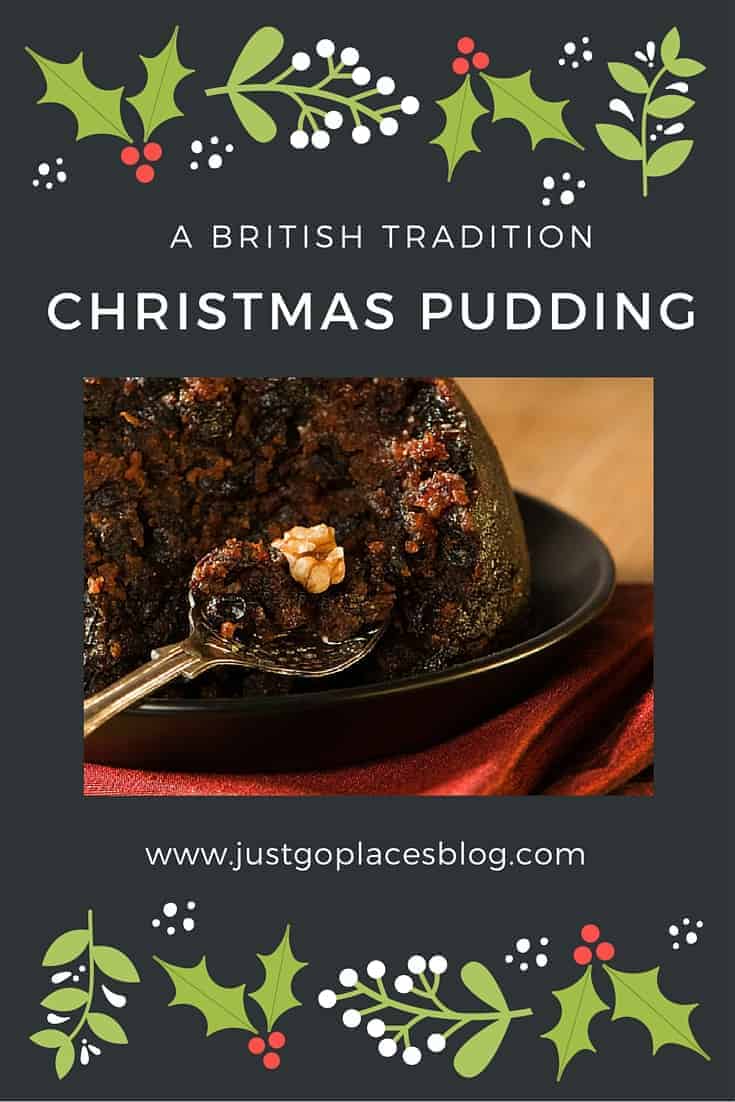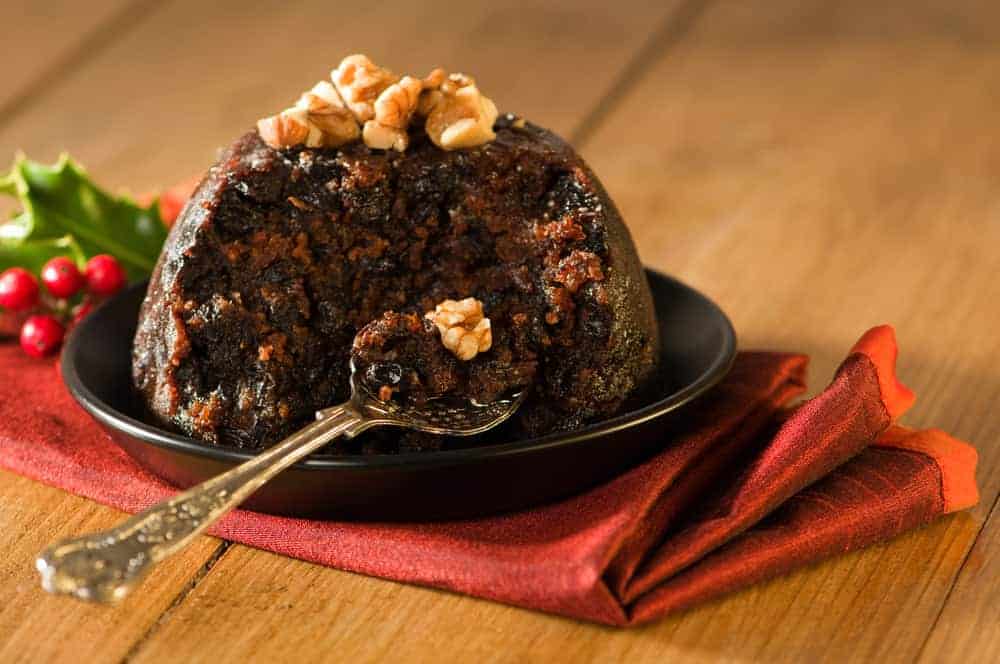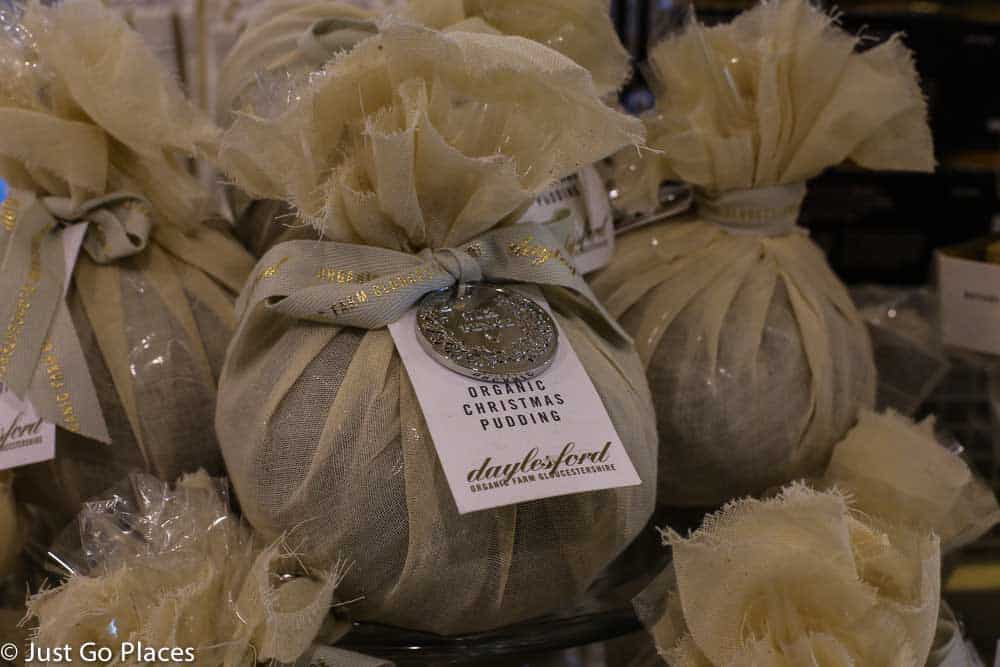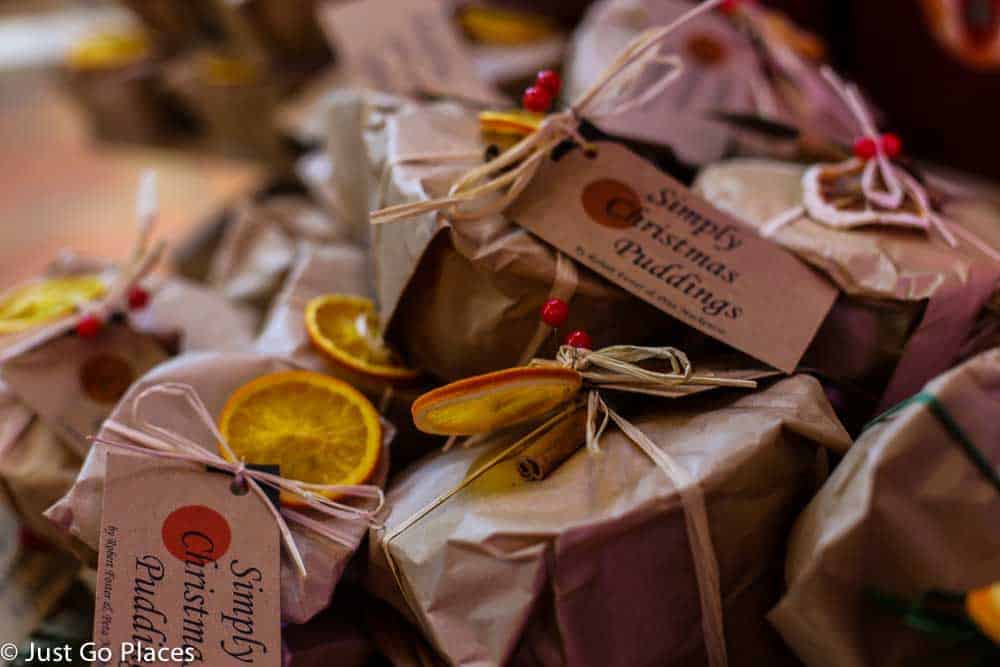When I first brought Christmas Pudding home to the family in the United States (along with the British husband), everyone was very curious as to what it would be like. After Christmas dinner, when we dug our spoons into the rich brown pudding covered in custard, my brother said what all of us non-Brits were thinking. “Isn’t this just fruit cake?”
My husband was aghast. “Christmas pudding is pudding while fruit cake is cake!” he sputtered. Well, that explanation cleared it all up.
For people who grew up thinking pudding was the stuff that came in Jello Pudding Cups, we had to google what he meant by pudding. According to the Great British Puddings website, there is actually no precise definition. So far, so unhelpful.
By the way, our foray into this Christmas pudding tradition, we discovered figgy pudding was something similar. Another sort of dried fruit thing that is made with figs. So now you know what you are singing when you belt out ‘We wish you a Merry Christmas’ and get to the verse asking for ‘figgy pudding.’
Contents
The History of Christmas Pudding
Christmas pudding (aka plum pudding) is served after Christmas dinner in Britain and Ireland. It’s also popular in Australia and other places with British immigrants. It never really took of in the United States because the Puritans thought it was too rich and decadent for a religious celebration (or any celebration, frankly).
There technically aren’t any plums because historically raisins were called plums. The pudding is mixed dried fruit which has been soaked in alcohol mixed with egg, suet and spices. You cook it by steaming it for hours and then it gets aged for months. The whole thing doesn’t spoil because of the lashings of alcohol inside.
Historically, Christmas puddings go back to medieval times. The pudding was made on the last sunday before the Christian advent season so that there was at least a month for the pudding to set. This sunday was called Stir Up Sunday. Some people make their Christmas Puddings even earlier since apparently this stuff doesn’t spoil.
In medieval times, Christmas pudding would have had meat. Today’s version of Christmas pudding that the British enjoy today with only dried fruit, like many traditions, is a Victorian invention. They made the shape round like a cannonball and served it with a sprig of holly on top. You may remember a reference to Christmas pudding in the Charles Dickens’ novel, A Christmas Carol.
What’s in a Christmas Pudding?
Christmas puddings are made with 13 ingredients to symbolise Jesus and his twelve apostles. Then, each family member has to stir the pudding from east to west to honour the journey of the Three Wise Men. A coin was put into the mixture and whoever got the coin when it was cut up had good luck for the new year. Unless, of course, they broke their teeth on the coin or choked on it.
You serve Christmas pudding by steaming it once again to reheat. Then, brandy is poured over the top and set on fire. This fire symbolises Christ’s passion. That killjoy of the English Civil War, Oliver Cromwell, even banned Christmas puddings during his Protectorate. Not only did he think Christmas Pudding was too rich and sinful a food he also thought the fire harked back to pagan rituals.
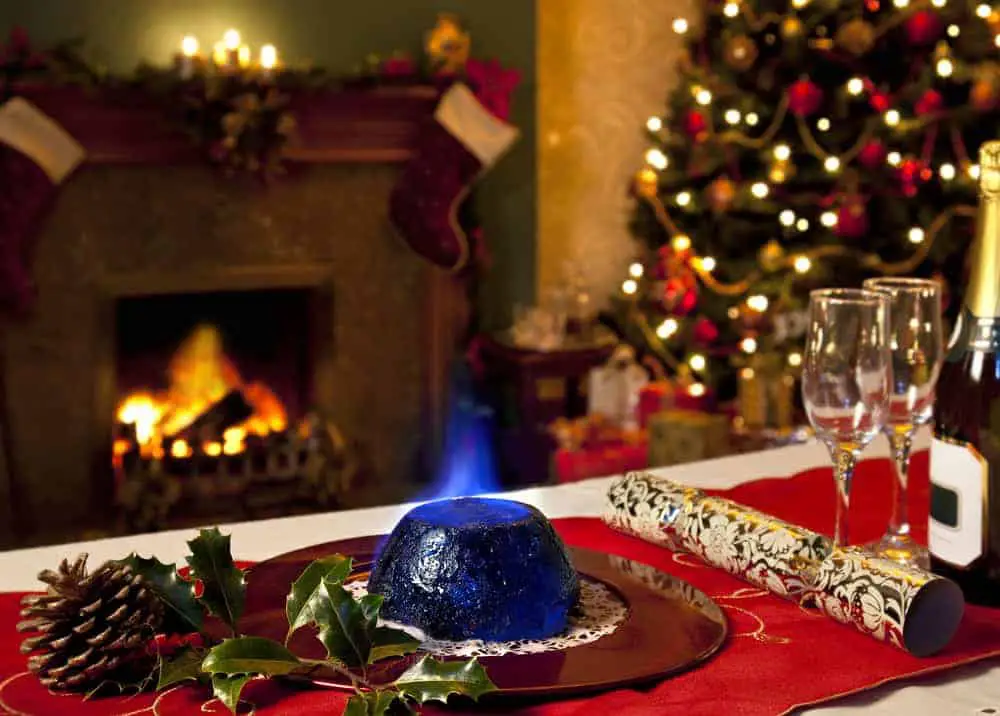
A Christmas Pudding with burning brandy topping with a festive background of fireplace and Christmas tree.
Christmas pudding can be eaten custard, cream or a brandy sauce. It’s supposed to taste rich and decadent thanks to all the dried fruit and brandy. Supposedly, it tastes even better the next day. We don’t usually have enough left over to try!
Nowadays, many families just buy a Christmas pudding which can be steamed either on the stove or in the microwave. The Queen hands out puddings from Fortnum & Mason to all her staff.
Considering her son, Prince Charles, has his own Christmas Puddings through his Duchy Originals range, I don’t know if the Prince feels slighted. After all, Christmas is definitely the time for family feelings to feel ruffled. In any event, the Royal Family does NOT eat store-bought Christmas pudding. They have their own recipe which is a closely guarded secret and has been handed down from the early 19th century.
If you fancy making your own version of Christmas Pudding, Jamie Oliver has a lighter version attributed to his grandmother. It only takes 3 hours to make but, like the original, can be made a month in advance. By the way, suet (fat from around beef kidneys) can be traded in for butter or a vegetable shortening. Although purists will say it’s not the same taste, your arteries will thank you.
Christmas Pudding vs. Fruit Cake
So back to our original quandary on figuring out the difference between cake and pudding. Well, the best we came up with is that cake is baked and pudding is steamed. Pudding also uses suet and cake does not. So technically, Christmas Pudding is a very close relative of fruit cake especially if you ditch the use of suet. In the tradition of all family arguments, all of us were a little bit right.

